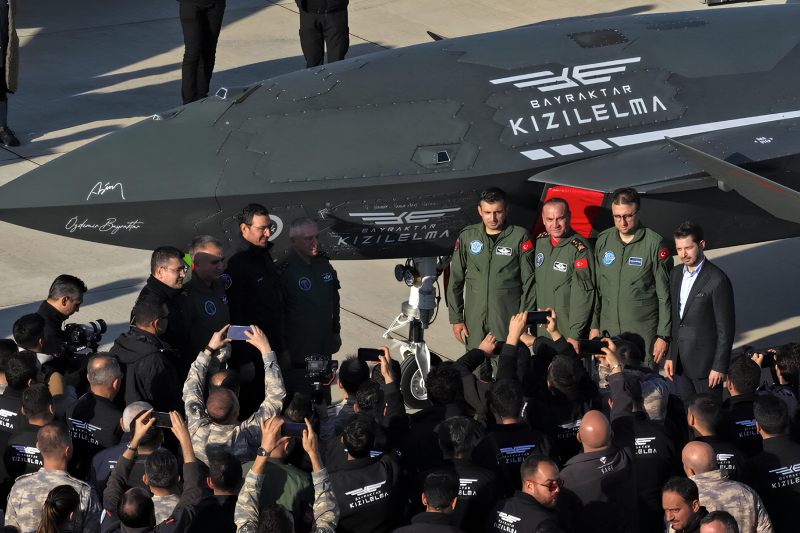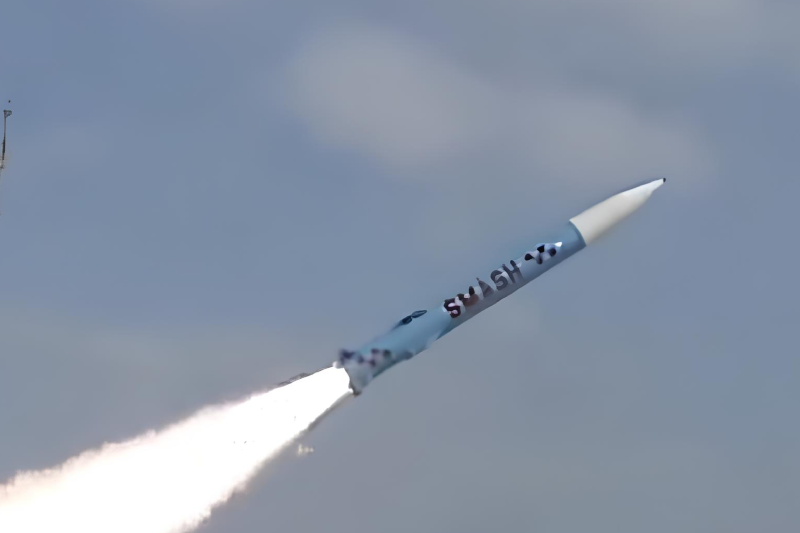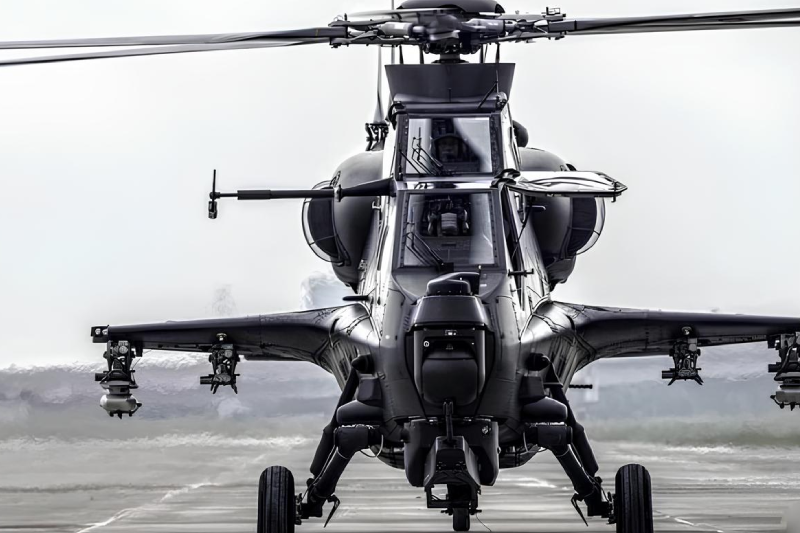China Unveils Next-Gen Stealth Tactical Jet
China has unveiled another groundbreaking aviation achievement with the emergence of a new Chinese stealth tactical jet featuring an advanced tailless design currently undergoing flight testing. This mysterious Chinese stealth tactical jet represents either a highly autonomous unmanned combat air vehicle with loyal wingman capabilities or potentially another sixth-generation crewed fighter that could compete directly with existing Chinese stealth programs, highlighting Beijing’s accelerating military aviation development pace.
Mystery Aircraft Design Features
Recent imagery reveals a sophisticated aircraft with a notably pointed forward fuselage and nose section that seamlessly blends into mid-set wings positioned halfway down the fuselage. The highly swept wing configuration features cropped tips and distinctive triangular trailing edge extensions creating a prominent ‘W’-like configuration.
The tailless design eliminates vertical stabilizers and separate tail surfaces, maximizing stealth characteristics while reducing radar signature. The broad fuselage suggests significant internal capacity for fuel storage and weapons systems, though specific weapons bay details remain unclear from available imagery.
Flight Testing Evidence
All available images show the aircraft with tricycle landing gear extended, indicating active flight testing operations. The presence of twin-wheel nose gear suggests either a heavier design configuration or potential carrier operation capabilities requiring enhanced landing strength.
An air-data probe mounted on the nose confirms early flight testing phases, a standard feature for prototype aircraft undergoing performance evaluation. The overall design optimization heavily emphasizes low observability characteristics, consistent with China’s recent sixth-generation fighter developments.
Potential Crewed Fighter Configuration
If equipped with a cockpit, this aircraft could represent a competitor to Shenyang’s J-XDS fighter, possibly developed by rival Chengdu Aircraft Corporation. This competitive dynamic would align with China’s established practice of developing competing designs from different manufacturers.
The aircraft shares striking similarities with the J-36 super-heavy tactical jet, particularly in forward fuselage design, nose section configuration, and general inlet arrangement. A smaller twin-engine fighter-sized variant of the J-36 would provide logical capability complementarity within China’s expanding stealth portfolio.
Advanced Unmanned Combat Vehicle Possibility
Chinese aerospace observers speculate this aircraft represents one of multiple counterparts to the US Air Force’s Collaborative Combat Aircraft program. The design could incorporate loyal wingman teaming capabilities while maintaining independent operational capacity for complex mission profiles.
Andreas Rupprecht, a Chinese aviation expert, suggests this represents one of China’s CCA designs, noting significant differences from previously observed tailless designs. Within Chinese aerospace circles, these unmanned systems are informally termed ‘teacups’ in contrast to crewed ‘teapots.’
September Military Parade Preparations
Satellite imagery from June 2025 reveals multiple CCA-type designs at Yangfang military base northwest of Beijing, staged for the September 3 parade commemorating China’s World War II victory anniversary. Five distinct drone designs appear in satellite images, ranging from 30 to 38 feet in length.
The parade preparations include hundreds of military vehicles and transporter erector launchers for ballistic missiles, alongside previously identified systems like the GJ-11 Sharp Sword stealth UCAV. Officials have confirmed the parade will feature unspecified “new-type combat capabilities.”
Twin-Engine Configuration Analysis
Frontal and rear views reveal two distinctive ‘humps’ over the rear fuselage, indicating probable twin-engine configuration. This substantial powerplant arrangement suggests either a large unmanned platform or crewed fighter rather than a smaller loyal wingman drone.
The twin-engine design would provide enhanced performance, extended range, and operational redundancy essential for either independent UCAV operations or sixth-generation fighter missions. This configuration represents significant capability investment regardless of the platform’s ultimate designation.
Stealth Optimization Features
The aircraft demonstrates comprehensive stealth optimization through its tailless configuration, swept wing design, and integrated fuselage structure. These features minimize radar cross-section while maintaining aerodynamic efficiency for high-performance operations.
Low observability characteristics align with China’s broader stealth aircraft development philosophy, emphasizing reduced detectability across multiple radar frequencies. The design represents advanced understanding of stealth principles and manufacturing capabilities.
China’s Expanding Drone Portfolio
This development joins China’s rapidly expanding portfolio of advanced unmanned systems, including the GJ-11 centerpiece UCAV and various loyal wingman designs. Lower-tier systems like the FH-97 and FH-97A demonstrate Chinese adaptation of Western concepts for domestic applications.
The proliferation of Chinese drone designs creates significant strategic implications for potential adversaries while demonstrating systematic investment in autonomous aviation capabilities. These developments parallel U.S. Air Force CCA programs while potentially exceeding current timelines.
Crewed-Uncrewed Teaming Integration
China actively develops crewed-uncrewed teaming capabilities across multiple platforms, including the two-seat J-20S stealth fighter designed for airborne drone control operations. The KJ-500 airborne early warning aircraft serves as a key node within China’s future air combat ecosystem.
H-6 missile carrier aircraft provide launch platforms for tactical drones, demonstrating Chinese commitment to multi-platform integration. These developments create comprehensive autonomous aviation capabilities spanning tactical to strategic mission requirements.
Artificial Intelligence Integration
Advanced autonomous aviation capabilities leverage developments in artificial intelligence and machine learning, enabling drones to operate increasingly independently from crewed platforms. This technological integration supports networked swarm operations across multiple scale levels.
Beijing’s active investment in AI-enabled aviation systems creates potential for revolutionary operational concepts combining human decision-making with machine execution speed. These capabilities could fundamentally alter air combat dynamics through enhanced coordination and reaction times.
Strategic Military Implications
The new aircraft could serve as a higher-performance counterpart to the GJ-11, providing extended range and payload capacity compared to smaller CCA designs. This capability would prove valuable for long-range operations supporting H-6, J-36, and future H-20 bomber missions.
Independent operational capability combined with loyal wingman functions would provide Chinese commanders with flexible options for various mission scenarios. The dual-role potential maximizes investment return while providing operational adaptability across diverse threat environments.
Also read this: China Unveils Swarming-Capable Black Bee Drones
Future Development Trajectory
China’s systematic approach to multiple concurrent aviation programs suggests continued rapid advancement across stealth, autonomous, and conventional platforms. The integration of AI capabilities with advanced airframe design creates foundation for revolutionary military aviation capabilities.
The September parade may reveal additional details about Chinese aviation developments while demonstrating operational readiness levels. These public displays serve both domestic pride and international deterrence purposes through capability demonstration.
This mysterious Chinese aircraft represents another significant milestone in Beijing’s comprehensive military aviation modernization, whether as an advanced unmanned combat vehicle or sixth-generation fighter, demonstrating China’s growing technological sophistication and strategic commitment to maintaining competitive military capabilities through innovative design and rapid development cycles.
Join us on Facebook, Twitter, YouTube, Instagram, and TikTok for real-time coverage of defense events worldwide.
Discover more from International Defence Analysis
Subscribe to get the latest posts sent to your email.












